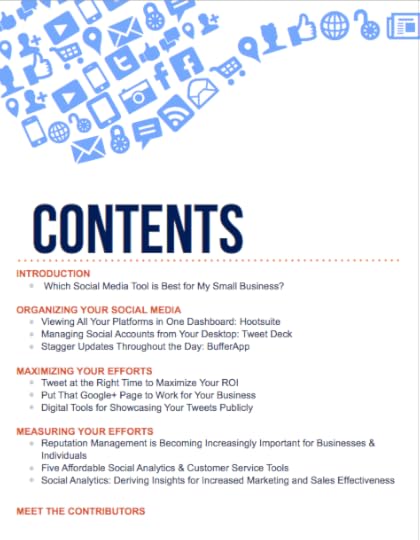Erik Qualman's Blog, page 625
October 14, 2013
Social Media Map
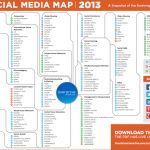
The completely updated 2013 Social Media Map is a great reference tool for marketers everywhere. Learn what new sites, apps, and tools can best widen your online branding and marketing channels. This map is from Overdrive Interactive, for more resources from Overdrive Interactive visit their Facebook Fan Page.
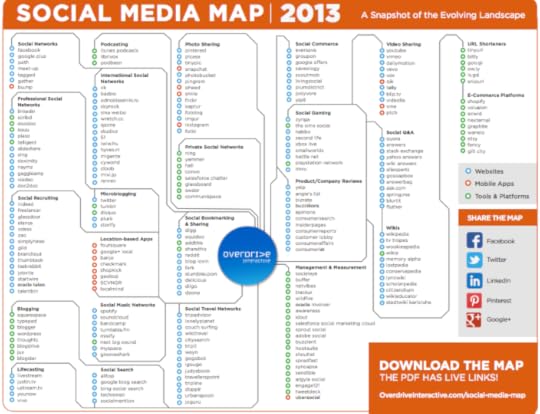
Overdrive Interactive's 2013 Social Media Map
[image error]
October 11, 2013
Free eBook: Digital Tools for the Small Business Manager
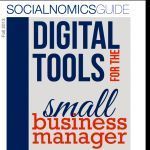
It’s our first ever eBook on Socialnomics! We have pulled together content from a variety of columnists on the topic of digital tools and small business management. This is the perfect guide for anyone managing social media for an organization, office, small business, etc. Here is a sneak peek at the table of contents.
Download Your Copy Here
[image error]
Spotify for Marketers: Some Spot-On Marketing Strategies

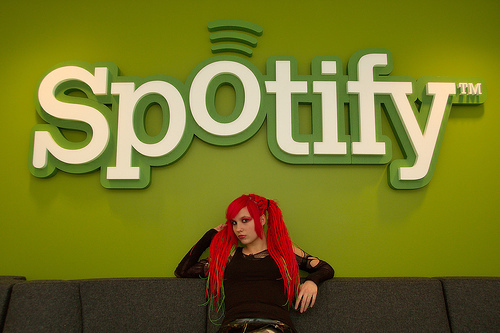 With approximately 5 million total users each day, seamless Facebook integration, and a library of over 15 million songs, Spotify is loaded with opportunities for marketers. So let’s look at some effective marketing strategies of how you can use this platform.
With approximately 5 million total users each day, seamless Facebook integration, and a library of over 15 million songs, Spotify is loaded with opportunities for marketers. So let’s look at some effective marketing strategies of how you can use this platform.
1. Audio and Banner Ads
Just like radio, Spotify allows short snippet audio ads to play in between songs to users who listen to the free version of Spotify. Spotify also offers banner ads and full-page takeovers to get your message to a targeted audience.
Spotify also allows you to narrow down who exactly will hear your ad through age range and geographic location. And unlike most online ads, the user can’t turn down the volume without pausing the commercial, so you can be sure that they hear what you had to say.
2. Promote a Contest Using Spotify
Spotify gives you the opportunity to create a contest that stands out from the same old overused ideas. For instance, Flo Rida challenged his fans to create a “Fit Like Flo” playlist filled with workout songs for the chance to win a $500 gift certificate to go towards purchasing workout gear or to be put towards a new or existing gym membership. Here are some other ideas for contests you could hold with Spotify:
Design the Ultimate Christmas Playlist
Name the TV show/ Movie That Played These Songs
Name the Year These Songs Were Released
Create the Ultimate Pop/ Country/ Jazz/ etc. Playlist
Bonus Move: Since Spotify is connected with Facebook, when fans participate it will be shared on their Facebook spreading the news about your contest. This broadens your reach to users who might not even listen to Spotify.
3. Use Music to Cultivate a Community
Odds are, the people in your target market will have multiple things in common including their taste in music. Bring these people together by having them develop a playlist based on a certain theme, or ask for their opinions on certain songs. You can establish community through playlists with these ideas:
Adding a new song to your playlist each week based on votes from the community
Have a well-known celebrity or musician create a playlist of their favorite songs
Don’t forget to share what you do on the Spotify community with those on all your social networks.
4. Take Advantage of Spotify’s Branded Playlists
These are playlists on Spotify that contain a blended cover art image and text. You can include links to any webpage in the playlist text, but there are certain rules that must be followed: all playlists must be generated by the users, feature only one song per artist, and have at least 40 songs due to policy restrictions. You can find out more about branded playlists on Spotify here.
5. Create Music Apps with Spotify Apps
Use the Discover Tab of Spotify Apps by giving Spotify API endpoints that deliver your content. With the Discover Tab, users are constantly matched with relevant content, which generates awareness and interest in your brand and product. Learn more about the app here.
With the right strategies in place, Spotify can be a powerful tool in your arsenal of marketing tactics. Now that’s music to our ears!
[image error]
October 9, 2013
Deploying Social Media on a Budget

 Social media marketing is almost a requirement for businesses today — at least, according to many of the big-name marketing experts.
Social media marketing is almost a requirement for businesses today — at least, according to many of the big-name marketing experts.
But, as a small business owner, you just don’t have the time, money, or employees to spare that the big corporations do. How can you run an effective social media campaign without breaking the bank, and still get your other business tasks done?
Know Your Customers
The most important step toward any successful marketing campaign, social media included, is to have detailed knowledge about your customer base.
Where do they spend their online time? What sorts of information/messages from you will they find valuable enough to share with their networks?
Knowing who your audience is, along with what’s important to them, will help you tailor your social media message. And a focused message that’s more effective at reaching your customers will save you both time and money.
Empower Your Employees
Because you’re working on a small business budget, you likely don’t have the extra money to have a dedicated social media strategist on staff. Instead, you’ll need to get creative, and get your employees on board.
Start by educating your employees about the message you want to present on your social networks. Come up with a list of best practices for social media use, and make sure everyone understands it.
By including your employees (or a small team of them) in your social strategy, you can share the work and prevent anyone from falling behind in their other work.
Get the Word Out
You’ve built your social networks, decided which employees will be monitoring them, and educated your staff on how to effectively use social media.
Now, how do you help customers find your profiles, and convince them to follow you?
There are several ways you can get the word out about your online presence, without spending a lot of extra money on advertising:
Encourage your employees who have direct contact with customers to point out your social media profiles. Adding a quick mention of your Facebook page or Twitter account is a great, no-cost means of letting customers know where to get in touch with you.
Add your social network links to your other marketing materials, both online and off.
Give customers an incentive to follow you, such as chances to win discounts or gift cards, or special sales only available via your social profiles.
Always reply promptly to customer concerns or comments on your social media accounts. By showing you’re easy to reach and that you care about connecting, you’ll boost your online reputation
Small businesses can be just as effective as their larger counterparts when it comes to social media marketing.
You’ll just have to be a little more creative with your budget tools and how you approach the platform, allowing you to save time and money.
By knowing which social sites your customers frequent, and working together with your employees, you can make social media work for your business.
Photo credit: homeaway.com
[image error]
Delta: A Stand Out Social Media Experience

Stand out experiences have the power to change brand perception, drive customer loyalty, increase revenue, and build deep relationships.
When I travel, I do whatever I can to get home as early as possible. That means cobbling together flight schedules that get me home quickly. Logging hundreds of thousands of miles split between several carriers is far from ideal, and if you traveled as frequently as I do you would think that at some point I would have picked an airline and stuck with it. Today I have, but it wasn’t until I was wowed by a stand out approach to customer service just a couple of years ago.
It was February and I was off to Tampa, FL to speak at Jason Keath’s SOCIAL FRESH Conference. On this particular occasion I flew Delta Airlines and arrived at Tampa early the morning of February 8th. I delivered the session, spent some time networking, and hurried back to the airport to catch the evening flight home.
On the way to the airport I checked my flight status and, low and behold, I was shocked to discover that I was headed to the airport on the wrong day. My official flight was scheduled to depart Tampa at the same time the following day. As you can imagine I panicked and did what anyone would: I called Delta to sort this mess out. The Delta representative I spoke to told me he could help, but that I would have to stay on the phone with him for about 30 minutes due to a computer system issue. I thought nothing of it and we made small talk as he maneuvered through the painstaking process of rebooking my flight manually.
After some small talk and banter – Success! I was booked on that night’s flight and made it to the gate just as the doors of the plane were closing. The flight attendant had just jumped on the P.A. and told us to stow our electronic devices as I sent out a tweet:
I arrived home a couple of hours later and was greeted at the front door by a very excited 2-year old boy who’s always happy when dad makes it home on time.
I thought nothing of the tweet I had sent until the next morning, when I checked Twitter and found a response from @DeltaBlog:
“To that new baby,” I thought. “How the $#@! did they know that?”
Let me explain what I thought had happened before I let you in on the reality. During that conversation with Delta Customer Service I thought he had collected and recorded information on me in his customer relationship management (CRM) system. The data collected during our conversation allowed him to build out a broad and deep customer profile on me. I assumed that my tweet triggered some sort of an alert letting Delta know I had made a comment. Someone on the social media team saw the comment, pulled up my profile, and replied with a personalized message based on the details in my profile. “Amazing,” I thought.
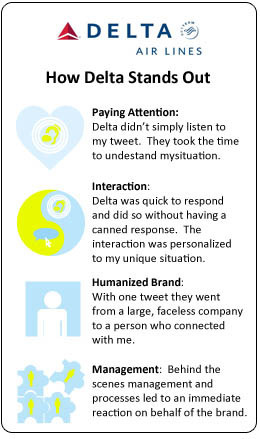 It was such a stand out experience for me that I immediately contacted Delta to understand what happened behind the scenes. That’s when Delta’s Social Media Manager, Rachael Rensink, shed some light on what actually happened. She told me that the day I was traveling back to Boston was also the day of one of the worst blizzards to hit the Washington, D.C. area. It dumped several feet of snow in the region and caused significant travel delays across the country. Rachael, who was monitoring Twitter that day, was inundated with negative tweets from weary travelers and was doing her best to resolve as many issues as possible. My tweet represented the lone piece of positive sentiment in a sea of negativity. When she saw it, she clicked through to my profile, went to my blog, learned about my background and concluded I must be hurrying home to see my son. She had singled me out and responded accordingly.
It was such a stand out experience for me that I immediately contacted Delta to understand what happened behind the scenes. That’s when Delta’s Social Media Manager, Rachael Rensink, shed some light on what actually happened. She told me that the day I was traveling back to Boston was also the day of one of the worst blizzards to hit the Washington, D.C. area. It dumped several feet of snow in the region and caused significant travel delays across the country. Rachael, who was monitoring Twitter that day, was inundated with negative tweets from weary travelers and was doing her best to resolve as many issues as possible. My tweet represented the lone piece of positive sentiment in a sea of negativity. When she saw it, she clicked through to my profile, went to my blog, learned about my background and concluded I must be hurrying home to see my son. She had singled me out and responded accordingly.
Delta’s approach was stand out. Rachael did not simply respond to my Tweet with a canned response; she paid attention and went the extra mile to personalize the interaction. This was a rare ‘customer wow moment’ and a stand out example of a brand ‘paying attention.’ For the first time in years of flying, I was able to connect with an airline carrier on a one-to-one basis, and in a way that didn’t involve sitting on hold for 45 minutes until someone had time for me. This time they reached out to me in a direct, simple, and meaningful way. This humanized the brand’s image, made Delta more than a faceless company and created real brand loyalty with a customer. Since this experience Delta has remained my carrier of choice.
Social media offers the opportunity to create unique experiences like this that lead to lasting connections. This is why using social to stand out is so important. It offers brands the ability to create relationships and create a lifetime of loyalty.
Interested in learning more about how to create lasting, stand out experiences on the social web? Check out my book, Stand Out Social Marketing.
[image error]
October 8, 2013
Growing Your Online Sales: Best 5 Ways to Execute Internet Marketing Strategies

The purpose and goal of online marketing is similar to the traditional marketing strategies. Both methods are meant to boost up the brand awareness and help in finding out a number of customers for any particular company. But talking about carrying the online marketing, it is very much different than doing the conventional way of marketing. These ways and methods used to tread online marketing are very much different than the traditional ones. If you are not well versed with these ideas then don’t worry, you can find some of the best ways to implement the online marketing strategies in order to boost up your online sales and five of these are discussed below:
1). Search engine marketing (SEM)
This is among the best ways to boost up your sales and has been popular since the idea of online marketing was introduced. It comprises of two elements, search engine optimization (SEO) and Paid Search Advertising (PSA). In plain words, SEO helps in making more visible over the different search engines for getting free traffic, while PSA pertains to getting traffic by paying for the ads run over the web for your brand or business. The basic idea of relying over SEM is to simply get more number of visits via the search engines both via organic search and through effective designed PPC campaigns. In SEO, you have several ways of getting higher traffic, which boost up your sales including relying over page descriptions, titles, Google authorship, web page speed, site navigation, back links, quality content, ALT text for images, etc. Also, you can find several effective tools for chalking out competent SEM (both SEO and PPC) strategies, which eventually help in boosting up the sales.
2). Content Marketing
The next best way to boost up sales via internet marketing is content marketing. This kind of marketing is considered as the heart of online marketing campaigns. Once you establish a good foundation via SEM, you can very well accomplish your user requirements. Content simply helps in creating loyal visitors or followers, comments, a number of social media shares and lastly good boost to your business sales. The crux of content marketing is to simply produce quality content, which your readers would simply want to read and thus can motivate them to say yes to the call to action process. There are different ways of content marketing. Content doesn’t mean simply text stuff, but it also comprises of good images, videos and of course textual stuff. You can further explore to use these formats of content for effective content marketing, which in turn can build up a good follower’s base and thus boost up sales.
3). Social media marketing
The other best way to implement internet marketing to get higher sales is social media marketing (SMM). It simply deals with carrying out online marketing using different social media sites like Facebook, Twitter, Google Plus, etc. With a huge popularity of social media sites, the scope of using these platforms to promote your brand or business has simply increased. With the SMM you are able to get refined target audience over different social networking sites for your business along with finding enough opportunities to promote your brand in a wide range of people. All you need to do is to establish a very good presence over all the popular social networks including Facebook, Twitter, Pinterest, and Google Plus by sharing a number of relevant and interesting content on a frequent basis. There are many ways of leveraging from SMM; you can further explore this option to reap good benefits for your business in the form of sales.
4). Mobile marketing
Mobile web has become very much popular these days with the advent of devices like smartphones and tablets. If you want to stay ahead in your online marketing efforts then incorporating this method is mandatory to promote your business and boost up your sales. Mobile marketing works on QR Codes, social media and text messaging marketing options. You simply need to get the phone numbers of people and send the lucrative deals about your products and services. Also, you can create interesting applications pertaining to your business, which can help in shopping your products online. Reshape your website or blog content in accordance to the mobile interface and reap the benefits of online marketing.
5). Local SEO strategy
Today smaller brands and businesses rely more on online marketing strategies rather than the big players, hence local SEO has its own importance. Local SEO deals with all the companies, which have physical address, so if you are a doctor, mechanic, retailer, or some other businessman, local SEO can help you to find the relevant customers over the web. The idea of local SEO strategy is to draw the local people or communities closer to businesses, which are based in the targeted areas. These can be carried out seeking the help of certain SEO strategies.
Final word
You can certainly increase the sales online if you are able to implement the right internet marketing strategies. The above are some of the best five ways in which you can end up getting higher sales over the web.
Kelly Marsh is a freelance journalist who has been writing about mobile technology, customer relationship management and women’s health for more than a decade. These days she is busy to contributes on seomorpheus
[image error]
Social Media: the Key to Online Student Services

A few weeks ago Josie Ahlquist wrote a great post on developing campus community through social media. Before you read this, go read that post (it is good). She used published research (thank you!) to make a great argument that the strategic implementation of social networking sites (SNS’s) can indeed lead to a greater sense of community amongst students on campus. For me, though, her post (and the research she references in the post) points to an even bigger idea: That social media is THE key to the successful implementation of student services for online learners.
Let’s start with facts. Technology has permeated nearly every aspect of modern life. Presently, the landscape of higher education may be among those realms changing most rapidly. Increasing financial pressures, easily accessible new forums for content delivery, and more robust infrastructures have all contributed to the ongoing evolution of this environment. The most notable change, perhaps, is the enormous migration to online education that has taken place over the past decade. According to recent research, an all-time high of 32% of all college students were enrolled in at least one online class in 2012, a proportion that has more than tripled over the past ten years (Allen & Seamen, 2013).
So what’s the problem?
Even if you subscribe to the notion that online content delivery provides a low-cost, accessible, and effective way of providing education, the looming issues with persistence and retention have still not subsided. A great deal of literature exists with regards to the challenges of persistence and retention in online education (Ariwa, 2002; Dirkx, & Jha, 1994; Levy, 2007; Parker, 1999; Parker, 2003; Rovai, 2002; Xenos, 2004; and Xenos, Pierrakeas, & Pintelas, 2002). Specifically, student retention is significantly lower for online students than their bricks and mortar counterparts (Parker, 1999). In fact, dropout rates in online environments have been found to be between 25%–40%. When compared to on-campus rates of 10%–20% (Carter, 1996; Parker, 1999; Parker 2003; and Xenos, 2004), a call to action becomes abundantly clear.
So what does this have to do with student affairs?
Everything. It is no surprise to student affairs professionals that social engagement is a key component to student success and specifically persistence (Astin, 1984; Mallette & Cabrera, 1991; Pascarella & Terenzini, 1980; Terenzini & Pascarella, 1977; Tinto, 1997). These types of interactions help students to feel connected to their institution and, in turn, increase the likelihood of their persistence to graduation (Rendon, 1994). Tinto (1997) suggested that this correlation is so important to student success that it should guide the overall organization of the university infrastructure. It would follow that community connection is an important component for online student success as well.
With that premise in mind, and knowing that online education will continue to grow, it is incumbent upon us to seek out and implement new ways to enrich the student experience for online learners; and I believe that social media is the channel to provide that support.
Why Social Media?
In her post Josie cited some great examples of how SNS’s support community building for on-campus students. But wait…there’s even more.
Evidence from some studies suggest that when used in specific ways, SNS’s don’t just support community building, but accomplish several other outcomes that align incredibly well with our work and values in student affairs. These outcomes included higher self-esteem (Ellison, Steinfeld, & Lame, 2007), higher social capital and lower levels of loneliness (Burke, Marlow, & Lento, 2010), higher engagement (Junco, 2012), and higher engagement in offline activities (Heiberger & Harper, 2008).
Not convinced yet? What if I told you that we could have some positive impacts on the diversity of student communities? While research is scarce, there is also some indication that social media could be a key to bridging racial diversity gaps. Wimmer and Lewis (2010) found evidence that students’ social media networks were significantly more diverse than their offline networks. Although these results are in conflict with findings in other studies suggesting that the social networks of college-aged students broadly overlap with their offline networks (Subrahmanyam, Reich, Waechter, & Espinoza, 2008), there is still hope that using these platforms for online education may serve to create more diverse communities than what might exist when students are left to their own devices in offline environments.
Along with the potential for positive effects on diversity, there is also evidence that social media can help students in overall acclimation to college life. Popular research (DeAndrea, Ellison, LaRose, Steinfeld, & Fiore, 2012; Gray, Vitak, Easton, & Ellison, 2013; Haythornthwaite & Kazmer, 2002; Pittman & Richmond, 2008; Selwyn, 2007; ) supports the idea that these unique sites are ideally suited to assisting students in adjusting socially to the college experience, something that many students struggle with. DeAndrea et al. (2012) found that students’ self-efficacy beliefs improved significantly simply by having access to peers in social media environments.
So let’s revisit the facts. Online education is continuing to grow and students are continuing to struggle. As student affairs practitioners, who are in the business of student success, we have the responsibility of finding ways to support the experience of our online learners too. With community building at the core of our mission, I believe that social media may be the key. What do you think?
References
Allen, I. E., & Seaman, J. (2013). Changing Course: Ten Years of Tracking Online Education in the United States. Sloan Consortium. PO Box 1238, Newburyport, MA 01950.
Astin, A. W. (1984). Student involvement: A developmental theory for higher education. Journal of college student personnel, 25(4), 297-308.
Ariwa, E. (2002). Evaluation of the Information, Communication and Technology Capabilities and E-Learning. USDLA Journal, 16(11), n11.
Burke, M., Marlow, C., & Lento, T. (2010, April). Social network activity and social well-being. In Proceedings of the SIGCHI Conference on Human Factors in Computing Systems (pp. 1909-1912). ACM.
Carter, V. (1996). Do media influence learning? Revisiting the debate in the context of distance education. Open Learning, 11(1), 31-40.
DeAndrea, D. C., Ellison, N. B., LaRose, R., Steinfield, C., & Fiore, A. (2012). Serious social media: On the use of social media for improving students’ adjustment to college. The Internet and Higher Education, 15(1), 15-23.
Dirkx, J. M., & Jha, L. R. (1994). Completion and attrition in adult basic education: A test of two pragmatic prediction models. Adult Education Quarterly, 45(1), 269-285.
Ellison, N. B., Steinfield, C., & Lampe, C. (2007). The benefits of Facebook “friends:” Social capital and college students’ use of online social network sites. Journal of Computer‐Mediated Communication, 12(4), 1143-1168.
Gray, R., Vitak, J., Easton, E. W., & Ellison, N. B. (2013). Examining social adjustment to college in the age of social media: Factors influencing successful transitions and persistence. Computers & Education.
Haythornthwaite, C., & Kazmer, M. M. (2002). Bringing the Internet home. The Internet in everyday life, 431.
Heiberger, G., & Harper, R. (2008). Have you Facebooked Astin lately? Using technology to increase student involvement. New Directions for Student Services, 2008(124), 19-35.
Junco, R. (2012). The relationship between frequency of Facebook use, participation in Facebook activities, and student engagement. Computers & Education, 58(1), 162-171.
Levy, Y. (2007). Comparing dropouts and persistence in e-learning courses. Computers & education, 48(2), 185-204.
Mallette, B. I., & Cabrera, A. F. (1991). Determinants of withdrawal behavior: An exploratory study. Research in Higher Education, 32(2), 179-194.
Parker, A. (1999). A study of variables that predict dropout from distance education. International Journal of Educational Technology, 1(2), 1-10.
Parker, A. (2003). Identifying predictors of academic persistence in distance education. Usdla Journal, 17(1), 55-62.
Pascarella, E. T., & Terenzini, P. T. (1977). Patterns of student-faculty informal interaction beyond the classroom and voluntary freshman attrition. The Journal of Higher Education, 540-552.
Pascarella, E. T., & Terenzini, P. T. (1980). Predicting freshman persistence and voluntary dropout decisions from a theoretical model. The Journal of Higher Education, 60-75.
Pittman, L. D., & Richmond, A. (2008). University belonging, friendship quality, and psychological adjustment during the transition to college. The Journal of Experimental Education, 76(4), 343-362.
Rendon, L. I. (1994). Validating culturally diverse students: Toward a new model of learning and student development. Innovative higher education, 19(1), 33-51.
Rovai, A. P. (2002). Sense of community, perceived cognitive learning, and persistence in asynchronous learning networks. The Internet and Higher Education, 5(4), 319-332.
Selwyn, N. (2007). The use of computer technology in university teaching and learning: a critical perspective. Journal of Computer Assisted Learning, 23(2), 83-94.
Subrahmanyam, K., Reich, S. M., Waechter, N., & Espinoza, G. (2008). Online and offline social networks: Use of social networking sites by emerging adults. Journal of Applied Developmental Psychology, 29(6), 420-433.
Tinto, V. (1997). Colleges as communities: Taking research on student persistence seriously. The review of higher education, 21(2), 167-177.
Wimmer, A., & Lewis, K. (2010). Beyond and Below Racial Homophily: ERG Models of a Friendship Network Documented on Facebook1. American Journal of Sociology, 116(2), 583-642.
Xenos, M. (2004). Prediction and assessment of student behaviour in open and distance education in computers using Bayesian networks. Computers & Education, 43(4), 345-359.
Xenos, M., Pierrakeas, C., & Pintelas, P. (2002). A survey on student dropout rates and dropout causes concerning the students in the Course of Informatics of the Hellenic Open University. Computers & Education, 39(4), 361-377.
[image error]
October 7, 2013
Build Your Connections Before You Need Them

Most professionals agree that the quality and breadth of one’s connections are critical to organizational and personal success. Positive relationships support problem solving, crisis management, collaborations, new initiatives and even enhance career opportunities. Despite this understanding, colleges don’t emphasize teaching networking strategies for students. Moreover, though we may agree that networking is important, many of us don’t intentionally create an action plan to develop our own network. As leaders, we need to make networking a universal expectation and model the activity for our staff. Everyone, at every level, can benefit from external insights, perspectives, and mutual cooperation.
Call it a clan, call it a network, call it a tribe, call it a family: Whatever you call it, whoever you are, you need one.” – Jane Howard, Novelist
Here are some tips on developing a personal networking plan:
1. Create a diverse list of people you want to know, soliciting friends, mentors, and colleagues for ideas. Be sure to include:
Departmental colleagues.
People from other functions within the larger organization (See Silos, Fortresses and Lunch With Strangers) Remember, titles are not synonymous with influence or potential. Seek out people who are doing interesting things, regardless of rank.
Professionals from unrelated industries. Exciting new ideas and partnerships often come from unexpected places.
Authors and bloggers whose topics connect to your work and offer you insights.
People you already know and value. Networking isn’t just about meeting new contacts; it’s also about tending existing relationships on a regular basis.
Professional association connections.
Leaders and “celebrities” in your field. Don’t be afraid to aim high. You’d be surprised by how many successful leaders are eager to share their experiences with others. Meeting someone in this category should result in more than idle chitchat. Respect their time and know what you’re looking to achieve before you connect.
Social media contacts. Look to convert “weak” ties, commonly associated with social media, into stronger relationships by connecting offline (or in person).
2. Set short term goals by selecting two to four people each month for several months at a time to contact and schedule a meeting. Write it down and share it with your supervisor or a colleague and ask for assistance to help keep you on track. The key here is establishing a regular routine that emphasizes quality over quantity. Everyone has busy seasons. Look to make connections when you have adequate time to prepare, engage and follow up.
3. Contact new people with a short email or phone conversation that indicates your interest and details the time commitment you’re requesting. If possible, schedule a meeting in person over coffee or lunch. If geography is an issue, suggest meeting at a conference or even through video chats like Google Hangout or Skype.
Sample requests to initiate a meeting/connection:
I’m looking for your (expert) opinion on a particular issue.
I’m trying to solve a problem that I think you’ve already solved. Do you have some time to meet to discuss your process?
I’ve heard about some of your new initiatives and thought there might be some opportunities for collaboration.
I’m looking for some suggestions for navigating the politics of a situation.
I am writing a blog/ article and was hoping to solicit your expertise in this area.
I was wondering if you’d be interested in joining our group/team at an upcoming staff meeting? We’re interested in learning more about your area and how we might be able to better partner with you.
Follow through with clarifying questions, ideas and a personalized thank you to leave a good impression and keep the door open for future conversations.
4. Commenting on a thought-provoking blog post or acknowledging a speaker after a talk are easy ways to make initial connections. Planting seeds of goodwill can lead to more meaningful conversations and relationships down the line.
5. Networking isn’t a one-way street. Your goal should be to develop mutually beneficial relationships over time. Be sure to offer assistance, resources or connections to help others succeed instead of just focusing on your own interests.
6. Volunteer for committees, conferences, events or projects. It’s a great way to learn, collaborate and develop meaningful, long-lasting relationships, often with people you might not have identified in your networking map.
7. Create your own hub by establishing a new club, organization, association or LinkedIn group. Invite others to participate and provide rich and meaningful interactions to develop a good reputation.
8. Contact the people you’d call if you were laid off. Reach out to them before you have an urgent agenda to discuss current events, trends and potential leads.
9. Build and maintain your professional online presence. Create (if you haven’t already) and update your LinkedIn profile. It’s your professional brand online and a powerful and easy way to contact peers in your profession. Such an established network is also critical when/if you consider new career opportunities.
Make networking a priority for you and your staff. Like investments, networks take time to grow and benefit from early and regular nurturing. Successful leaders understand that it’s vital to build your connections before you need your connections.
What are you waiting for? Pick up the phone, write an email, and get started today! Feel free to share your networking suggestions, challenges and experiences in the comments below.
[image error]
Build your connections before you need them

Most professionals agree that the quality and breadth of one’s connections are critical to organizational and personal success. Positive relationships support problem solving, crisis management, collaborations, new initiatives and even enhance career opportunities. Despite this understanding, colleges don’t emphasize teaching networking strategies for students. Moreover, though we may agree that networking is important, many of us don’t intentionally create an action plan to develop our own network. As leaders, we need to make networking a universal expectation and model the activity for our staff. Everyone, at every level, can benefit from external insights, perspectives, and mutual cooperation.
Call it a clan, call it a network, call it a tribe, call it a family: Whatever you call it, whoever you are, you need one.” – Jane Howard, Novelist
Here are some tips on developing a personal networking plan:
1. Create a diverse list of people you want to know, soliciting friends, mentors, and colleagues for ideas. Be sure to include:
Departmental colleagues.
People from other functions within the larger organization (See Silos, Fortresses and Lunch With Strangers) Remember, titles are not synonymous with influence or potential. Seek out people who are doing interesting things, regardless of rank.
Professionals from unrelated industries. Exciting new ideas and partnerships often come from unexpected places.
Authors and bloggers whose topics connect to your work and offer you insights.
People you already know and value. Networking isn’t just about meeting new contacts; it’s also about tending existing relationships on a regular basis.
Professional association connections.
Leaders and “celebrities” in your field. Don’t be afraid to aim high. You’d be surprised by how many successful leaders are eager to share their experiences with others. Meeting someone in this category should result in more than idle chitchat. Respect their time and know what you’re looking to achieve before you connect.
Social media contacts. Look to convert “weak” ties, commonly associated with social media, into stronger relationships by connecting offline (or in person).
2. Set short term goals by selecting two to four people each month for several months at a time to contact and schedule a meeting. Write it down and share it with your supervisor or a colleague and ask for assistance to help keep you on track. The key here is establishing a regular routine that emphasizes quality over quantity. Everyone has busy seasons. Look to make connections when you have adequate time to prepare, engage and follow up.
3. Contact new people with a short email or phone conversation that indicates your interest and details the time commitment you’re requesting. If possible, schedule a meeting in person over coffee or lunch. If geography is an issue, suggest meeting at a conference or even through video chats like Google Hangout or Skype.
Sample requests to initiate a meeting/connection:
I’m looking for your (expert) opinion on a particular issue.
I’m trying to solve a problem that I think you’ve already solved. Do you have some time to meet to discuss your process?
I’ve heard about some of your new initiatives and thought there might be some opportunities for collaboration.
I’m looking for some suggestions for navigating the politics of a situation.
I am writing a blog/ article and was hoping to solicit your expertise in this area.
I was wondering if you’d be interested in joining our group/team at an upcoming staff meeting? We’re interested in learning more about your area and how we might be able to better partner with you.
Follow through with clarifying questions, ideas and a personalized thank you to leave a good impression and keep the door open for future conversations.
4. Commenting on a thought-provoking blog post or acknowledging a speaker after a talk are easy ways to make initial connections. Planting seeds of goodwill can lead to more meaningful conversations and relationships down the line.
5. Networking isn’t a one-way street. Your goal should be to develop mutually beneficial relationships over time. Be sure to offer assistance, resources or connections to help others succeed instead of just focusing on your own interests.
6. Volunteer for committees, conferences, events or projects. It’s a great way to learn, collaborate and develop meaningful, long-lasting relationships, often with people you might not have identified in your networking map.
7. Create your own hub by establishing a new club, organization, association or LinkedIn group. Invite others to participate and provide rich and meaningful interactions to develop a good reputation.
8. Contact the people you’d call if you were laid off. Reach out to them before you have an urgent agenda to discuss current events, trends and potential leads.
9. Build and maintain your professional online presence. Create (if you haven’t already) and update your LinkedIn profile. It’s your professional brand online and a powerful and easy way to contact peers in your profession. Such an established network is also critical when/if you consider new career opportunities.
Make networking a priority for you and your staff. Like investments, networks take time to grow and benefit from early and regular nurturing. Successful leaders understand that it’s vital to build your connections before you need your connections.
What are you waiting for? Pick up the phone, write an email, and get started today! Feel free to share your networking suggestions, challenges and experiences in the comments below.
[image error]
October 3, 2013
Paying Attention on the Social Web [infographic]

One of the most appealing aspects of social media is the opportunity to target and acquire new customers. Marketers can also use social to learn more about existing customers and use that knowledge to increase the relevancy of your messaging. But how can you do this effectively?
The tools already exist to monitor social conversations and unlock key insights into who to reach, how to reach them, and the right messaging to use. For an easy two-step guide on monitoring and acting on social media conversations, take a look at our infographic below! It’s time social marketers went beyond simply counting ‘Likes’ and comments, and uncovered the deeper meaning of social conversations.
For more useful insight into how to stand out in social media, head over to Amazon and pick up a copy of my book: Stand Out Social Marketing: How to Rise Above the Noise, Differentiate Your Brand, and Build an Outstanding Online Presence.
[image error]

